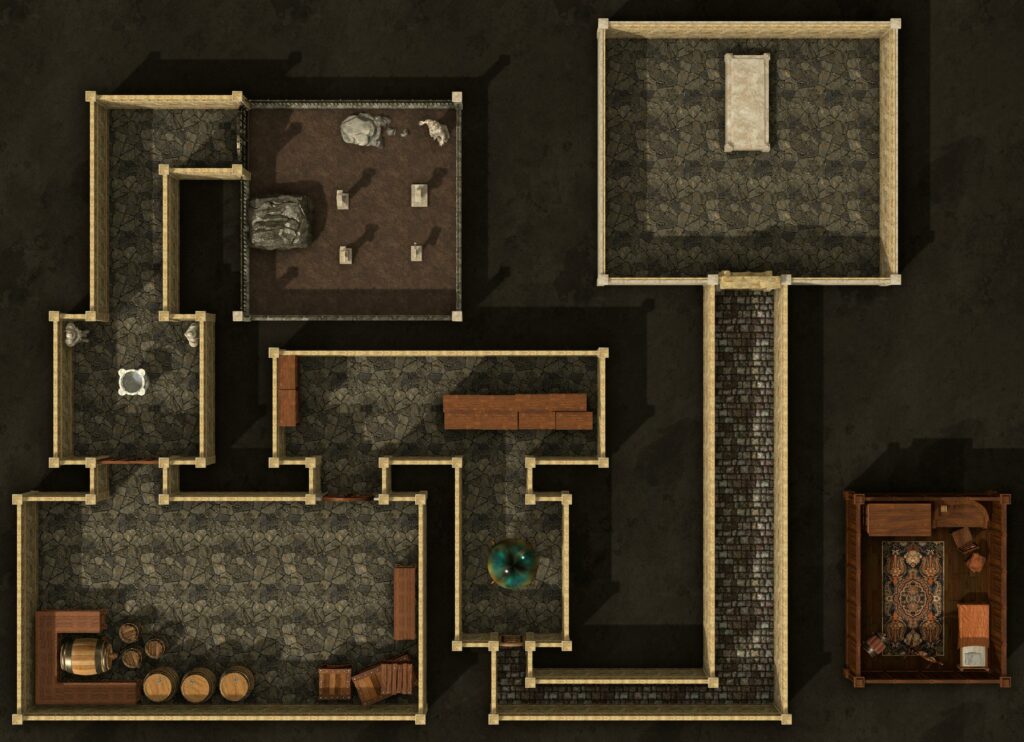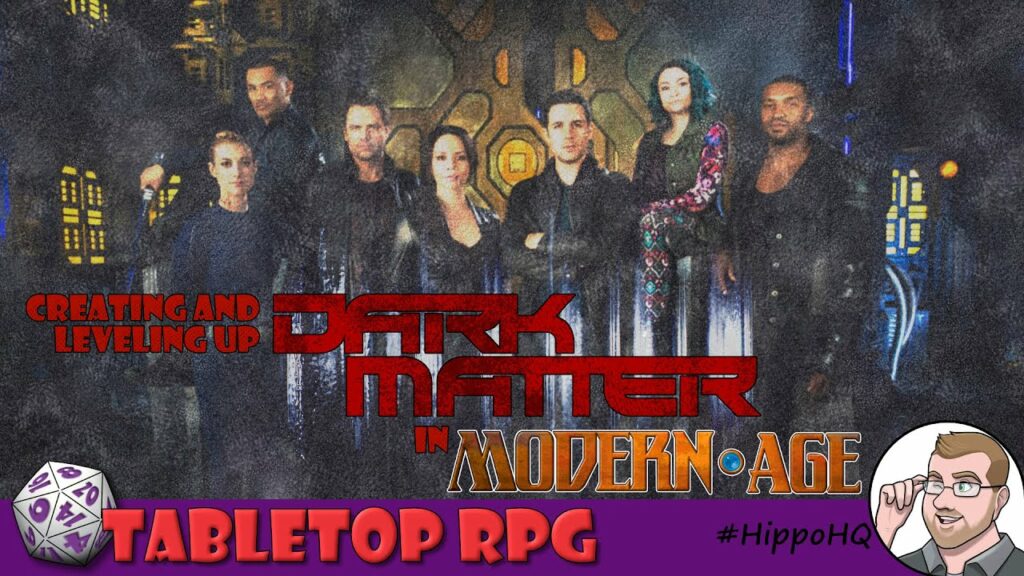From Skirmish to Spectacle: Incorporating Mass Battles into Your TTRPG Campaign
Traditionally, tabletop RPGs (TTRPGs) have focused on the individual hero’s journey, with intricate combat systems designed for small-scale encounters. However, many classic stories and video games feature epic large-scale battles that can feel lacking when translated to a TTRPG.
This blog explores the limitations of traditional methods for handling mass combat and delves into a variant rule system from Fantasy AGE that injects the grandeur of large-scale battles into your TTRPG campaign without bogging down the experience.
Genre Shift: From Narrative to Battlefield
Early roleplaying games like Dungeons & Dragons (D&D) were built for tactical combat on a gridded battlefield. However, the genre has branched out, with games like Call of Cthulhu and Pathfinder emphasizing narrative focus over tactical maneuvering. This shift means established systems often struggle to handle large-scale battles effectively.
The solution for some might be to switch entirely to a wargame system designed for mass combat, like Warhammer Fantasy Battles. However, this often means leaving behind the established narrative and character development of your TTRPG campaign.
The Clunky Horde: A Flawed Solution
The most common approach to mass combat in TTRPGs involves throwing hordes of nameless enemies at the players. While this can evoke a sense of epic scale, it can feel clunky and impersonal. The players become spectators rather than commanders shaping the course of the battle.
Enter Fantasy AGE’s Mass Combat System: A Streamlined Approach
Fantasy AGE’s companion book introduces a compelling variant rule for mass combat. It streamlines the process by focusing on key moments in the battle rather than simulating every clash.
Here’s the core mechanic:
- Leadership and Strategy: Both sides’ commanders roll a skill check (Communication[Leadership] or Intelligence[Military Lore]) modified by troop types, special units, and strategic planning.
- Accumulating Success: Success on the skill check adds “stunt dice” to a “Success Threshold” for that stage of the battle. This threshold determines the number of successes needed to win that stage.
- Three Stages: The battle unfolds in three stages: Opening Moves (using Military Lore), Main Engagement (using Leadership), and Finishing Moves (chosen by the winner of stage 2).
- Best Out of Three: The side with the most successful stages wins the battle.
This system keeps things simple while offering tactical depth. Players strategize beforehand to gain advantages, then witness the battle unfold through the lens of key turning points.
Engaging the Whole Party: Beyond Just Watching Rolls
One might worry that Fantasy AGE’s mass combat system reduces players to passive observers. Here’s where it truly shines, incorporating your party’s actions in two key ways:
Pre-Battle Mobilization: Shaping the Battlefield from Afar
The players, as champions or heroes of the realm, aren’t just informed of the impending siege – they become instrumental in securing allies and preparing the city’s defenses.
- Diplomatic Missions: Negotiate with neighboring towns or lords for reinforcements, bolstering the enemy’s target number for victory. Imagine convincing a reclusive order of rangers to join the fight, adding their elite scouting and archery skills to the city’s defenses.
- Fortification Upgrades: Lead work crews to repair damaged walls and bolster defenses, increasing the enemy commander’s target number for success. Perhaps the players unearth an ancient magical trap within the city walls, needing reactivation to hinder the enemy’s siege efforts.
- Specialized Recruitment: Seek out elite troops like skilled archers or mounted knights, granting bonuses to the players’ rolls during the mass combat stages. The party ventures deep into a treacherous mountain pass to convince a tribe of griffin riders to lend their aerial support to the city’s defense.
- Tactical Planning: Discuss strategies with the commander, influencing the choice of maneuvers and potentially unlocking special actions during crisis points. The players, having scouted the enemy forces, propose a daring ambush on a crucial supply line to slow their advance towards the capital.
Consider this example: An enemy army, having sacked outlying towns, marches towards the capital city. A small garrison defends a fort located near the city, strategically positioned to delay the enemy’s advance.
The players, tasked with holding the fort, can directly influence the upcoming battle through their actions:
- Rallying the Garrison: Inspire the ragtag group of soldiers, boosting morale and potentially increasing the fort’s defensive capabilities during the mass combat phase.
- Gathering Allies: Elder Scrolls IV: Oblivion quest “Allies for Bruma.” The players must try to secure allies to help with the defence.
- Fortifying the Outpost: Help repair damaged sections of the fort walls and reinforce weak points, making it harder for the enemy to breach them.
- Scouting and Sabotage: Lead missions to gather intelligence on the enemy’s size and composition, or even conduct daring raids to disrupt their supply lines or sabotage their siege weapons.
These pre-battle actions directly affect the mass combat system. The party isn’t just waiting for the battle to unfold; they’re actively shaping the odds in their favor for the upcoming clash that will decide the fate of the capital.
Crisis Points: Taking Center Stage in the Maelstrom
When the tide of battle turns, the narrative focus shifts back to the TTRPG system. A “crisis point” triggers when either side gets close to winning a stage:
- Breached Defenses: The enemy surges through a weakened point in the wall. The players take control of their characters, leading a desperate last stand to hold the line.
- Leader in Peril: The fort commander is surrounded by enemy forces. The players must fight their way through the enemy ranks to rescue them.
- Strategic Maneuver: A window opens for a daring sally mission to disrupt the enemy’s siege efforts. The players lead a charge out of the fort, creating an opportunity to cripple the enemy’s siege weapons.
- Defending the Gate: The enemy focuses their assault on the main gate. The players scramble to hold their ground, engaging in a desperate close-quarters battle.
These crisis points put the players back in the driver’s seat, allowing them to influence the course of the battle with their own actions and skills.
This two-pronged approach ensures the players feel invested in the outcome. Their actions before the battle matter, and they get to directly influence the course of the fight during critical moments. The epic clash isn’t just a backdrop – it’s a culmination of their efforts and a stage for their heroism to shine.
Is it Perfect? No, But it’s Epic!
This system isn’t a silver bullet. It requires adaptation for different settings and may not be ideal for every campaign. However, it offers a compelling and streamlined way to incorporate the thrill of large-scale battles into your TTRPG experience, without the need for miniature armies.
For further inspiration, consider exploring how mass battles are depicted in media:
- Fantasy: Analyze the Battle of Helm’s Deep from The Lord of the Rings.
- Modern Setting: Look at the Battle for Wakanda in Avengers: Infinity War.
And finally, if you’re interested in incorporating this system into your games, check out the Fantasy AGE rulebooks! (Consider removing the affiliate link here, depending on your blog’s monetization policy)





